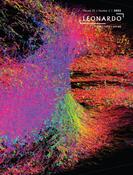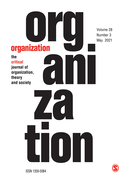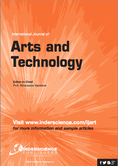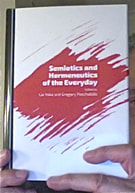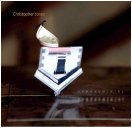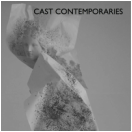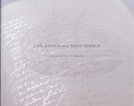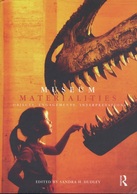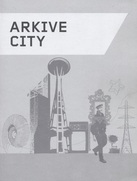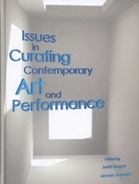recent publications
|
2023: (forthcoming) We contemporise, they persist. Book chapter. In Payne, E., Ellis, A. L. R., & Wootton, W., (eds), Ancient Plaster: casting light on a forgotten sculptural material, London: The British Academy.
‘Cast Contemporaries’ was an exhibition proposed by the architectural historian Margaret Stewart to mark the completion of the restoration and cleaning of Edinburgh’s historic plaster cast collection. She had overseen this project as the curator of collections at Edinburgh College of Art and, having heard about my work with contemporary art in the museum environment, Stewart invited me to curate an exhibition for the 2012 Edinburgh Arts Festival. There had been conferences and symposia. Historians and classicists had discussed the cultural significance of this truly outstanding accumulation of sculptural, architectural, and anatomical reproductions. But what would artists make of their restoration? This chapter reports on what happened when the academic debates gave way to the creative process of exhibition-making and the attention of the contemporary art school community was drawn to the newly conserved casts. |
|
2022: Ruptures and wrong-footings: destabilizing disciplinary cultures, Journal article (with Fiona Crisp and Louise Mackenzie), in Leonardo/ISAST, MIT Press.
In this transcribed conversation, three artists from the research group The Cultural Negotiation of Science (UK) consult each other on the different generational perspectives they bring to the contested field of arts-science research. Traversing territories between art-practice, physics, genetics and critical theory, their practice-based strategies actively destabilize the binary nature of cross-disciplinary dialogue in productive ways, allowing the spaces between artistic and scientific modes of enquiry to become sites of learning, both within and beyond academic institutions. |
|
2020: Voice over: archived narratives and silent heirlooms, multimodal journal article, in entanglements: experiments in multimodal ethnography, 3(1): 43-54.
[extract] I am looking at a photograph of a circular container. Its surface is pitted and scratched, not simply from use but also from age. There is a label. It says Zen for Film. If this is the famous artwork that goes by that name, then the canister will contain the reel of blank celluloid footage that featured in exhibitions and screenings by the artist Nam June Paik in the early 1960s. Those present at the time would have watched a patch of projected light flicker luminously on a gallery wall as the surface of the film deteriorated through wear and tear. I think about this as I look at the battered round object and realise that the actual artwork took place in the mechanism of a projector. It was not an object, it was an event-oriented piece made for repetition rather than physical preservation. Paik kept renewing the idea (there is, for example, a 1963 version called Zen for TV) indicating that the project could, perhaps should, be updated, even if the technologies involved had not been invented when the experiments began. https://entanglementsjournal.org/voice-over-archived-narratives-and-silent-heirlooms-2/ |
|
2019: Lost in translation? Transferring creativity insights from arts into management, Journal article (with Annick Ancelin-Bourguignon and Ricardo Azambuja), in Organization: the critical journal of organization, theory and society, Volume 27, No. 5.
Since the early 2000s the business sector has, as a matter of both professional and academic concern, repeatedly advocated the transfer of artistic practices, especially those deemed exemplary forms of creativity, to a management world grappling with new challenges – a claim we here call the ‘transferability thesis’ in order to consider the responses made to what Boltanski and Chiapello define as an artistic critique of capitalism. Drawing on the wide range of relevant academic literature, this article critically examines the plausibility of the ‘thesis’. To this end, we review analytical literature advocating artistic transfers alongside empirical work that examines art interventions within organizations. Both are important components of a broader organizational aesthetics approach even though, we contend, neither strands of research provide a plausible argument for meaningful transferability. We then draw on arts-based literature, management theory and psychology to compare notions of creativity at both ends of the proposed transferral process. We highlight convergence and variance in art and business thinking, noting fundamental mismatches with regard to utility, rationalization and heteronomy – three levels of incompatibility that make a genuine transplantation of art ideas highly unlikely. Finally, we discuss our critical contribution in relation to the specious status of the ‘thesis’ and the centrality of Boltanski and Chiapello’s triadic model of capitalism to our investigation. By way of a conclusion, we suggest that further research is needed to examine the symbolic nature of appeals to artistic creativity by management. |
|
2018: The Train Starts – it Stops – it Starts Again – Book essay, in Borland, C., Meacock, J., & Patrizio, A. I Say Nothing, Glasgow Museums. [extract] For five years I shared my daily train to Newcastle with two geneticists who enthused about the difficulties of researching the human genome.I would respond with stories about working in an art school, often describing the challenge of pursuing contemporary art practices within the museum environment — my own interest as an artist-curator. Curiously, we found ourselves debating complementary ideas. It turns out that a sizeable segment of the clustered genetic material known as a genome is inactive and we speculated that these ‘non-coding’ elements were not simply the junk-like residue of past DNA activity, as was then the prevailing view. Rather, my fellow commuters were of the opinion, now more widely favoured, that DNA code is active precisely because its components sit in contrast to a surrounding surface that could be code but is no longer operative. In this way biological information becomes an effective signal. ‘Junk DNA turns out not to be junk at all’, said one of the geneticists. Well, yes, and when it comes to the momentum of contemporary cultural life perhaps knowing that museum collections are kept in storerooms is enough to keep cultural messages ‘live’. Remember that these conversations took place on a commuter train which, like the on–off signals of biological code, started and stopped and started again all the way to its destination … |
|
2017: Studio Ruins: describing 'unfinishedness'. Journal article, in Robertson, F. & Roy, E. (eds) 'Multisensory Materialities in the Art School’, Studies in Material Thinking 17, Special Issue. With creative practices things go wrong, work is ruined, and projects remain unfinished. Paradoxically, since failure is a matter of enhanced appreciation in the arts (e.g. Samuel Beckett’s ‘fail better’), neither ‘wrongness’, ‘ruination’ nor ‘unfinishedness’ means what it says. Building on the topographical encounters of fine art studio teaching, this article explores the intersection of ruined work, incomplete creativity and disarticulating sensations. While Jason Rhoades’ messy installation art in a public gallery can evoke (like a 2005 account of abandoned factories by Tim Edensor) a problematic romanticization of unfinished and ruined work, I argue that other less recognized forces are in play. In the privacy of art school studios, monitoring ‘health and safety’ procedures challenges all evocations of aesthetic spectacle and poetic vision. This amounts to an alternative topology of ruination that relates to Caitlin DeSilvey’s 2006 descriptions of agricultural decay. Because a creative struggle is more like daSilvey’s material confusion than Edensor’s romanticized disorder, my article considers four further theoretical ideas in order to place studio ruins at the service of practice-based research in art schools—the muddle of ‘mingled senses’; the complicit character of ‘criticality’; the ‘stupefying’ consequences of study, and the tactical defeat of ‘decreation’. |
|
2016: The pleasure of the holder: media art, museum collections and paper money. Journal article, International Journal of Arts and Technology.
When the artist Julian Rosefeldt exhibits video projections of cast Græco-Roman sculptures, exhibition-goers experience a crisis in resemblance and equivalence between a gallery installation and museum artefacts. On the face of it media magic seems to supersede, even eliminate, the experiential force of collection-holding. This article compares media and artefactual exhibiting practices by combining semiotic analysis, art theory and Georg Simmel’s sociology of money. In the late 18th century, as European museums began to display plaster reproductions of Classical sculpture and historic architectural details, economists worried that paper money would sever the representational force of monetary signifiers from the intrinsic value of the bullion they signify. Perhaps Rosefeldt defers promises like a banknote? Perhaps museums postpone the ‘pleasure of the holder’ like a bank reserve? In both cases, this article argues, the technologies of reproduction and repetition (old and new) tell us a great deal about the semantics of objects. |

